“Unsmurfable Smile” (“Le sourire du Schtroumpf Grognon”)

Summary: Smurfette and Blossom get it in their heads that they can make Grouchy smile. Handy, Hefty, and Papa Smurf join them in a hike to make it happen.
Commentary: This all starts with Smurfette reading a self-help book that says that a smile can take you far in life. With the right smile, people will do anything you want them to do.
She puts it to the ultimate test: Make Grouchy smile.
It’s a tricky setup for an episode. Grouchy is a great character, but he’s also one note: He hates everything. It works great in sudden, unexpected cameo appearances. (See “Leaf It Alone” for one good example, but there are plenty of others.)
Can that carry an entire story, though?
I think it can and it does with this one. It’s not something they could get away with a lot, and thankfully it looks like this is the only Grouchy-centric story in the season. There’s enough variety in the jokes that it works. First, there’s a lot of interplay between the other Smurfs talking about Grouchy. That gives the other characters moments to shine, such as the differences between how Blossom and Smurfette pack for their adventure, or how Hefty and Handy take opposite sides of the same bet.
But, second, Grouchy is grouchy in different ways. He tries new things even though he says he hates them, and that gives the possibility that he might find something unexpected to like. In the end, that’s what happens, though it’s from something accidental and completely unexpected. It actually happens twice, but the first time is interrupted before anyone can notice, including Grouchy.

It’s also a surprisingly action-packed episode. The Smurfs go zip-lining, which helps, but then a walk down a steep hill takes an unexpected twist that sees them descending faster than expected. Their attempts to dig themselves out of that hole turn into a series of blackout gags worthy of a Road Runner cartoon. (No wonder why I like this show so much.)
We also learn that there’s a Grouchy origin story — he’s only been Grouchy since he was stung by some kind of insect. As Smurfette says, “So what was his name before that?” Papa Smurf has no answer. I’m curious now…
Title Translation: It translates out to “Grump Smurf’s Smile,” which is pretty descriptive. I like “Unsmurfable Smile” a bunch, too, just for how it rolls off the tongue in English..
Credits:
Script: Reid Harrison
Storyboard Supervision: Alexandre Viano
Storyboard: Stéphane Annette
Director: William Renaud
s01e03: “Mind the Cat” (“Attention : chat intelligent !”)

Summary: Brainy has a brilliant idea: Use Papa Smurf’s hypnosis glasses to convince Gargamel to leave the Smurfs alone. Of course, something goes wrong and Gargamel winds up following only the orders of… Azrael! The only thing the cat wants is something to eat, of course: a Smurf!
Commentary: There are certain Go-Tos in the world of cartoon storytelling that inevitably get used in series like this, even when I was younger. Hypnosis is one of those things. Quicksand would be another. They’re time-honored plot devices that probably go back to silent movies in Hollywood. They can be a lot of fun when used right, and I think this episode uses them well.
The story starts with a dialogue-free sequence where an alarm goes off to wake up Scaredy Smurf, who is scared by that noise and skulks around the Village in fear until Smurfette and Brainy find him.
Brainy, in possession of those hypnosis glasses, uses them to convince Scaredy that he’s not scared. So Scaredy immediately walks up to a sleeping bear to boop his nose.
This is another sequence I loved a lot because the storytelling is so strong. I’ve read a lot about the art of storyboarding in recent years. It’s really what most people would think of as the directing of the cartoon. The storyboard artist picks the angles, the distances, the camera movements, everything that you see on the screen. Every shot is well-considered and exists for a reason. The storyboard artists on The Smurfs do a great job with it.
Take the sequence of shots where Scaredy, now hypnotized into fearing nothing, walks up to a sleeping bear to boop his nose.
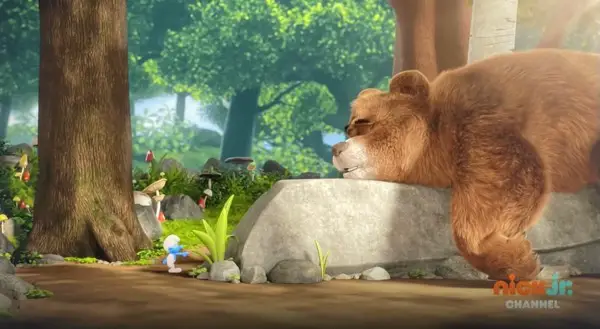
First, there’s this wide shot that tracks slighly with Scaredy. It holds for a relatively long time. He walks all the way up the side of that rock before we cut to —
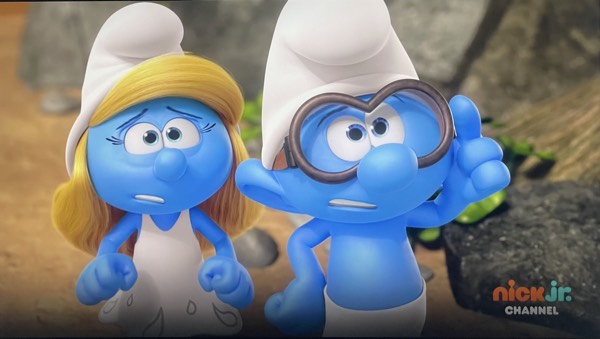
Smurfette and Brainy are having second thoughts? They sent Scaredy to this task. But now it’s real and it’s OK to worry a bit.
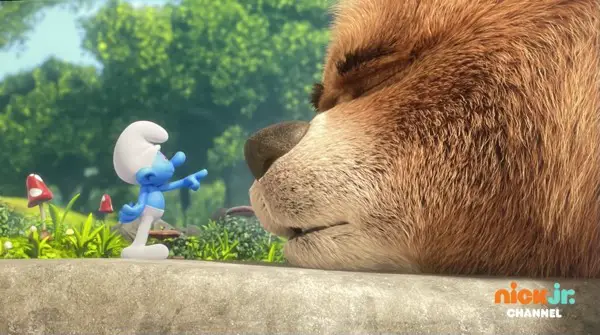
Then we cut back to Scaredy, who’s covered a bit more ground. We’re much closer now on him and the bear. The camera has pushed in to emphasize how close the two are getting. This is where Scaredy would usually be very scared. The camera stays fixed here for another unusually long time, evenough to even include a gag where the bear’s heavy breathing pushes him away for a moment.

Then, to emphasize the touch, the camera cuts ahead, closing in on just the hand reading out to the bear’s nose. We, as the viewer, are as close to the bear as we’d ever want to get, and the most important action of the sequence now dominates the screen. You’re not going to miss it.
Look back at the preceding shots. We follow Scaredy up that rock and we keep jumping closer and closer to him as he gets closer to the danger.
After he does the boop, the next important thing to happen is that the hypnosis breaks, so we cut to Scaredy’s face and see the eyes change.
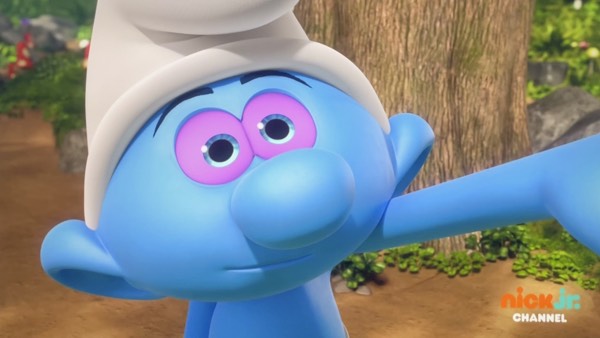
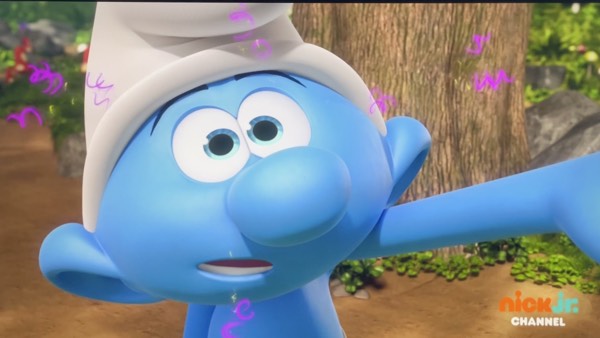
Then cut back to Brainy and Smurfette who celebrate Scaredy’s accomplishment.
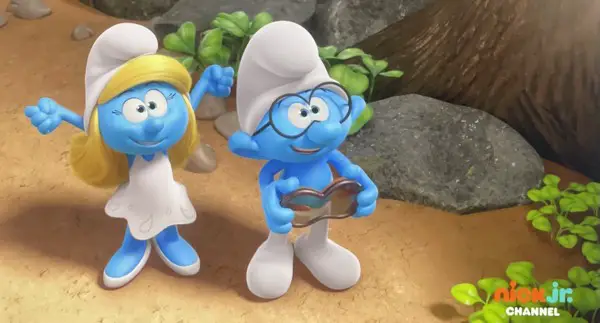
Then back to Scaredy, realizing what he’s done and being excited about it. He starts abusing the poor bear’s nose for a long time —

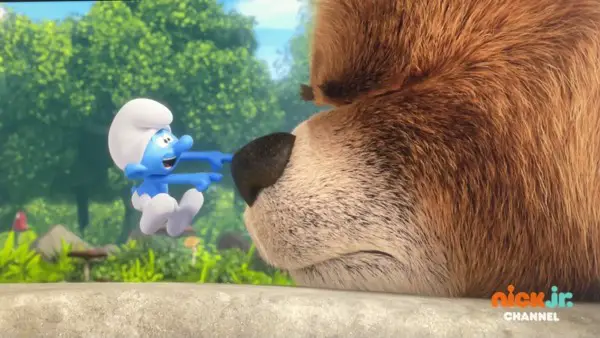
— before the inevitable happens and the bear wakes up.
Scaredy never heard the saying about letting a sleeping bear lie, I guess.
I cover all that because it shows how much control a good storyboard artist has over the way a story is told, much the same way the artist in a comic book controls as much of the storytelling as the writer.
If this whole sequence was one static wide shot, it wouldn’t have had the power or the comedy that the final sequence has. It would be too removed. It would lose the immediacy of the action. It would also bore the younger viewer who is so used to a cut every two seconds of a tv show, whether they know it or not.
Cutting in on Scaredy as he got closer and closer works. Having a shot linger for a while when you know the bear could wake up at any minute lets the viewer feel a bit of the tension. Cutting back on the other Smurfs for reaction shots gives you a good read on the room.
This is all solid storyboarding techniques, well-executed.
Aside from the angles and distance choices, there are the acting choices the storyboard artist has to make.
Once Gargamel is under Azrael’s spell later in the episode, he acts as one does under hypnosis — stiff-legged, zombie-like, almost robotic. In one scene, Azrael tests him by making him walk back and forth. Gargamel does it, but in surprising ways, whether it’s by bouncing on his head or clucking like a chicken, or doing it with a funny walk.
This happens repeatedly throughout the episode — the scene would work with a straight approach, but the storyboards add more to it. There’s a variety of movements that keep things from getting repetitive.
The story carries on. Eventually, the plan to use the hypnosis glasses on Gargamel comes up, but Gargamel accidentally winds up following Azrael’s orders. Eventually, Gargamel (in his Smurfs pajamas) teams up with Brainy to take down Azrael with a little extra help from Papa Smurf in another one of those classic romps through Gargamel’s hovel.
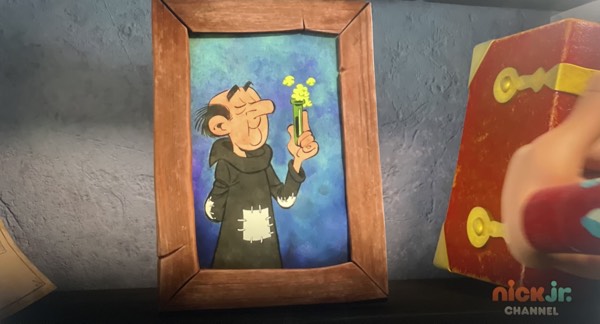
One small moment I enjoyed: there’s a moment where Azreal replaces Gargamel’s small framed photo of himself with one of Azrael. The quickly-seen Gargamel photo looks like it came straight out of the comics.
Title Translation: We go here from “Warning: Smart Cat!” to “Mind the Cat,” which sounds better, I think. My first thought on seeing the title was that they missed their chance to go with “Save the Cat,” which would be a great play on the famed screenwriting book. However, this episode isn’t really about saving the cat, so it wouldn’t work.
Credits:
Script: Peter Saisselin, Amy Serafin
Storyboard Supervision: Alexandre Viano
Storyboard: Lionel Brousse
Director: William Renaud

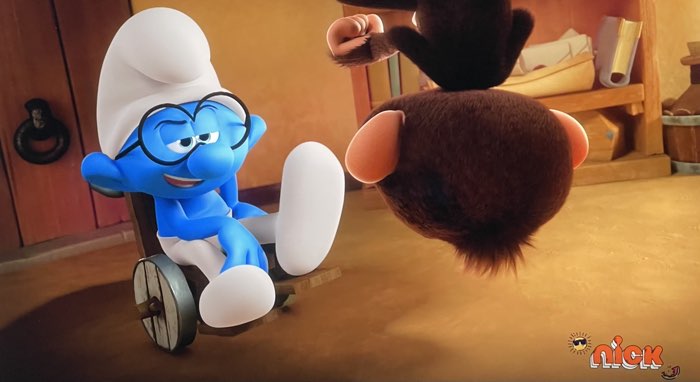
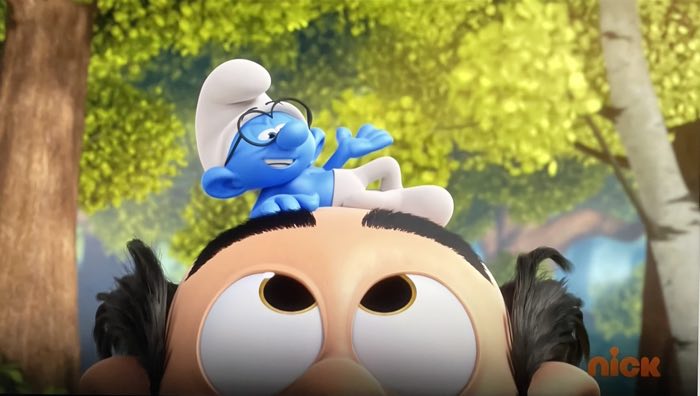
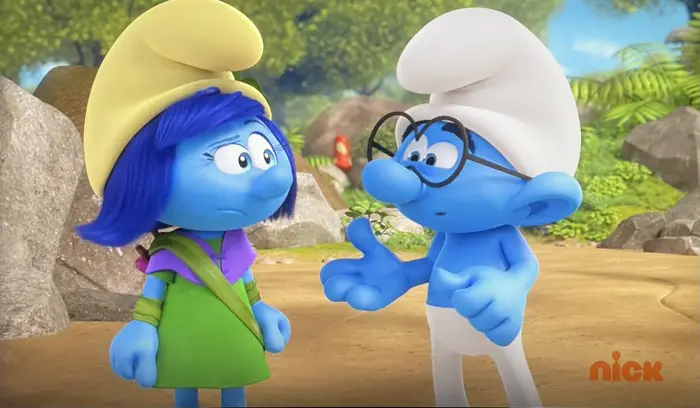
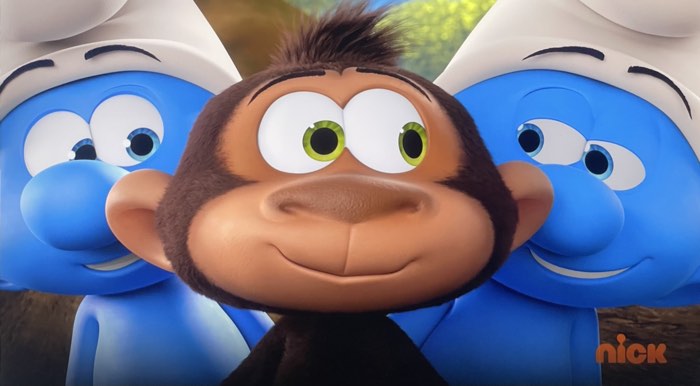
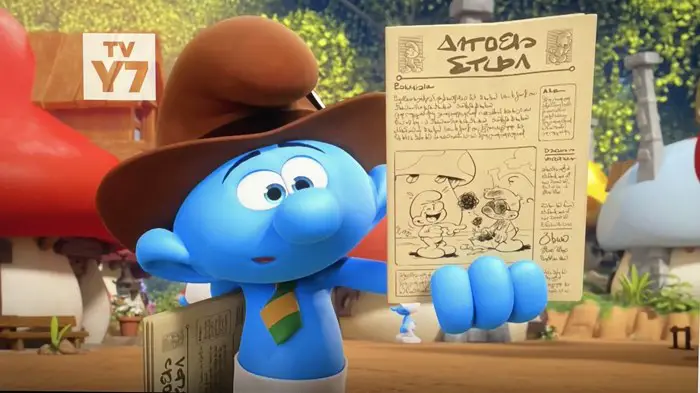
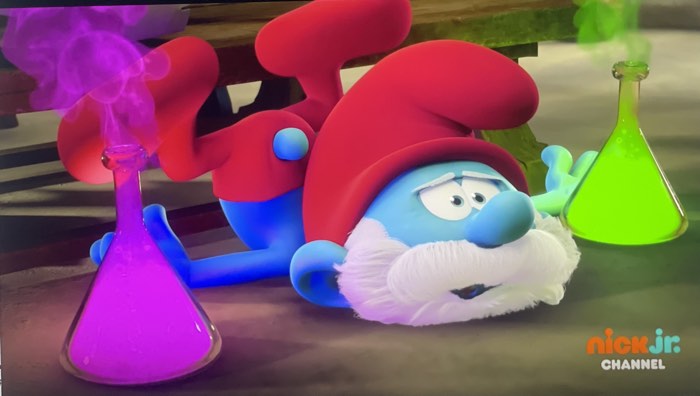
One Comment